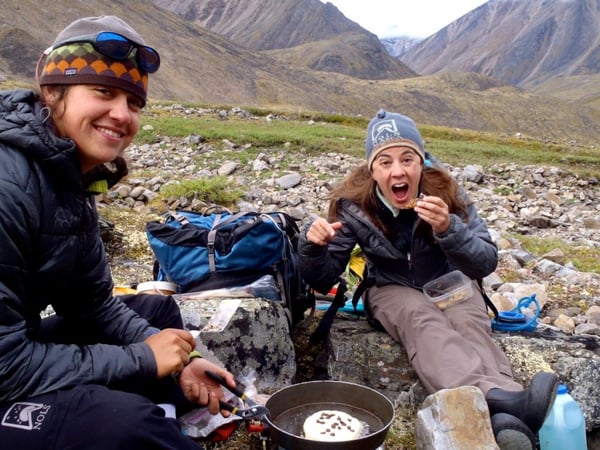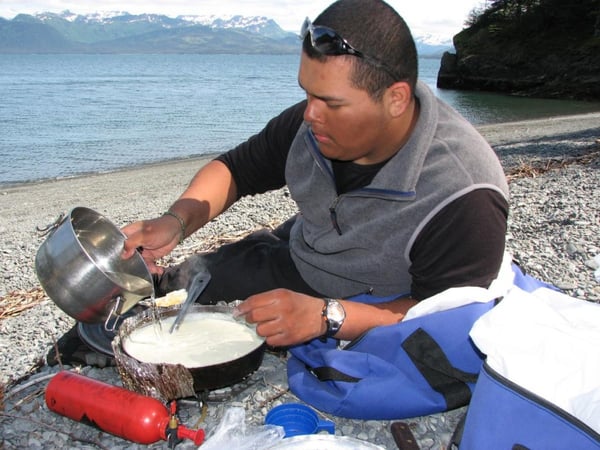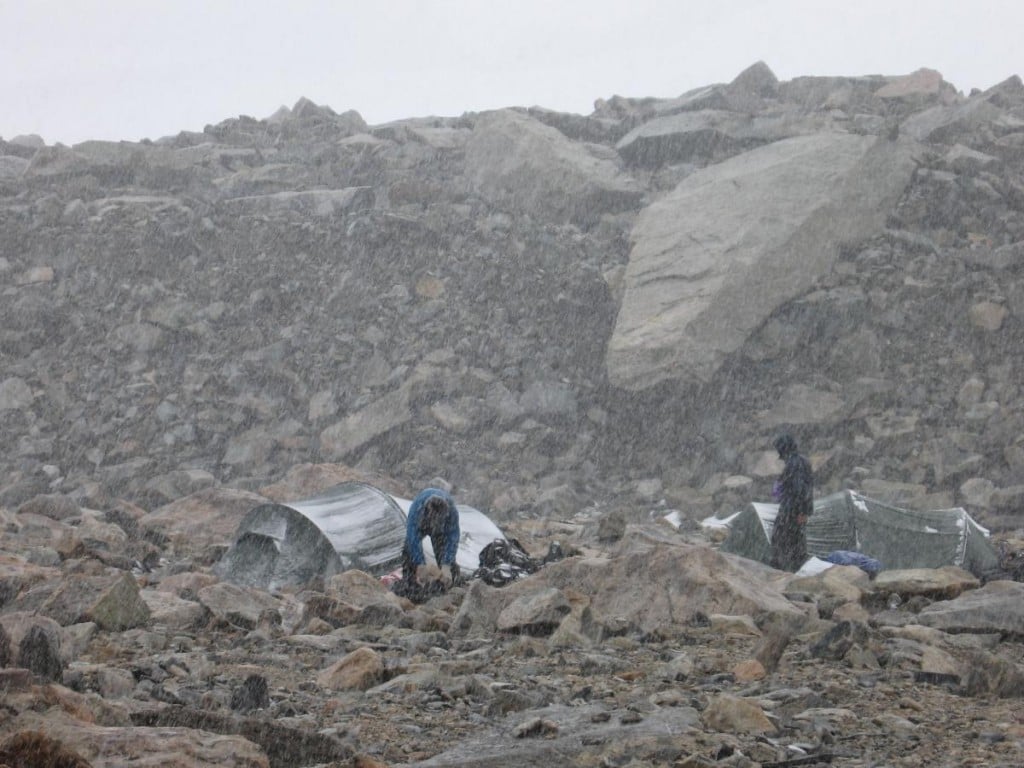 Sometimes, all it takes are a few spices to make a backcountry meal delicious. Photo by Shelli Johnson.
Sometimes, all it takes are a few spices to make a backcountry meal delicious. Photo by Shelli Johnson.
NOLS enthusiast Dan Innamorato saw the blog we posted about unusual ingredients to enhance backcountry recipes, and has a little cooking wisdom of his own to offer. An avid hiker with a close connection to the Appalachian Trail and the Northeastern U.S., Dan first learned about NOLS when he started a correspondence with NOLS founder Paul Petzoldt after meeting at a workshop.
Here are Dan's thoughts on eating well in the backcountry.
Spices to Make Your Meals Delicious
Most backpacking food is glop; not in a bad way, but just because it’s mostly one-pot meals that are either soup consistency or stew consistency. So, a varied menu of spices and herbs can defeat the sameness.
In addition to the spices suggested in 4 Unusual Ingredients to Enhance Any Backcountry Recipe, I’d also add:
- Grains of Paradise: Similar to a peppercorn and used in the same pepper grinder, but with a unique taste.
- Rosemary: Terrific on roasted veggies.
- Cilantro: Tasty for many different dishes.
- Dried or fresh Mint Leaves: Peppermint, Spearmint & Chocolate Mint is superb. Put chocolate mint in your vanilla pudding dessert!
 Being more efficient with the water you boil gets you more uses out of the fuel you carry. Photo by Tracy Baynes.
Being more efficient with the water you boil gets you more uses out of the fuel you carry. Photo by Tracy Baynes.
Tips to Be More Fuel-efficient When Cooking
The NOLS Cookery stepped away from the glop concept in order to present backpacking meals as a highlight of the day rather than just a chore, but I think a lot of today’s Ultralight hikers believe they must sacrifice nutrition and taste for light packs. Inexperienced hikers will go for the S & R Diet (Snickers and Ramen), which won't sustain them for long-term trips (like thru-hikes).
My backpacking cuisine experience is spartan, but what I stress to others is to be efficient. For example, you can carry less fuel by being more efficient with how you use boiled water.
- Don’t waste fuel by pouring boiling water on the ground if it can serve a second or third purpose. For instance, instead of draining water out from pasta, place the pasta in a mesh bag to cook. When the noodles are done, the bag can be lifted out for serving and the hot water can be used to heat a ready-to-eat meal pouch. When that’s done, you can even drop in some teabags. You boil one pot of water and get three uses out of it.
- You can boil extra water for breakfast oatmeal and tea, and then use the surplus hot water to pre-soak veggies, rice, lentils or legumes in a screw-top container during the day. They will cook faster at suppertime, plus the fuel burned at breakfast has served three purposes.
Give some of Dan’s tips and tricks a try the next time you hit the trails, and don’t forget to bring the NOLS Cookery with you for a little inspiration!
Dan Innamorato is a NOLS enthusiast with extensive experience backpacking on the Appalachian Trail, in Bryce, Zion, and Grand Canyon National Parks, and in the German & Swiss Alps. He recently addressed backcountry nutrition in a Practical Considerations for Long-Distance Backpacking presentation I gave last week at the Appalachian Trail Conservancy Biennial Conference at Shenandoah University (Winchester VA). He is currently a member of the Appalachian Long-Distance Hikers Association, the Appalachian Mountain Club, the Appalachian Trail Conservancy, the Green Mountain Club, the Mid-Atlantic Hammock Hikers Association, and the Potomac Appalachian Trail Club.



